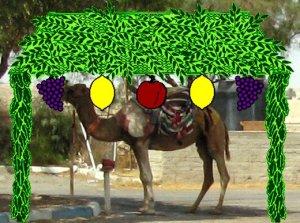Archive
So What, Exactly, is Tu Bishvat?
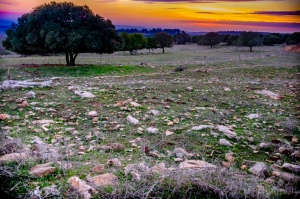 The evening of January 24th marks the start of Tu Bishvat this year. The name means the 15th day of the Hebrew month of Shevat, and it refers to the so-called “new year of the trees.”
The evening of January 24th marks the start of Tu Bishvat this year. The name means the 15th day of the Hebrew month of Shevat, and it refers to the so-called “new year of the trees.”
Why do trees need a new year?
For an answer we turn to the Talmud — that great compilation of Jewish laws and lore from the middle of the first millennium CE. The section called “Rosh Hashana” (“New Year”) starts with the intriguing claim that “there are four new-year days.” And it turns out they fall in the months of Nissan, Elul, Tishri, and Shevat.
The new year with which we are now most familiar — Rosh Hashana — falls in Tishri, which, as it happens, is the seventh month of the year. Certainly the year ought to begin with the first month, so we know we have some digging to do.
The first month is Nissan. Passover falls on the 15th day of this month, and the first day is what the Talmud calls the new year for kings and festivals.
Elul is the sixth month, usually overlapping August and September in our calendar. The first of Elul is the new year for the cattle-tithe.
After Elul comes Tishri, the first day of which is New Year’s Day. As we just just saw, this puts the Jewish new year in the middle of the Jewish year.
And then we get to Shevat, the 11th of the 12 months in the Jewish year. The Talmud advises that some people thought that the 1st day of Shevat was the new year for trees, but the prevailing opinion relegated that status to the 15th day of the month.
Fine. So we have, working our way through the year, the new year for kings (in the 1st month, a couple of weeks before Passover), the new year for cattle-tithes (in the 6th month), New Year’s Day (on the first day of the 7th month), and then the new year for trees in the 11th month.
The Talmud explains why kings need their own new year, starting with a cryptic answer: “on account of documents.” It turns out that documents such as mortgages were dated according to the year of a king’s reign — as in, “during the second year of the reign of King So-and-So.” The question is when that second year commences. Is it on the anniversary of his ascension to the throne? No. It’s on the new year for kings. So along with each first day of Nissan there begins a new year for reckoning time according to the reign of kings.
What about the cattle-tithe new year? It used to be that people would pay yearly taxes of a sort based on how many animals they had. To implement this system, an arbitrary cut-off date for counting the animals was required. For instance, you might have 15 heads of cattle on one date, and 20 an another. At what point would you pay for the additional animals? The answer is that the 1st of Elul was the cut-off date. You paid taxes each year on however many animals you owned on Elul 1. (The IRS uses the same principle in calculating income tax. Tax on money earned up to December 31 of one year is due by April 15 of the next year.)
Similar reasoning applies to the new year for trees. Taxes were paid on fruit trees. A tree whose fruit was fully formed before Tu Bishvat of a given year was taxed in its entirety during that year; if the fruit formed thereafter, it was taxed in the next year.
Of course, we no longer reckon our years by kings and no longer pay tithes on the animals or on the fruit trees that we own. (And in any event, my animals number zero each year.) So why should we care?
Beyond the interesting if now-irrelevant details, and the spotlight on our history, we find meaningful customs that have come to accompany the different new years. On Tu Bishvat, for instance, we now pause to honor trees and nature in general.
In addition, we learn that our lives have more than one yearly cycle. Natural patterns commence around Passover, with the onset of spring, just as things like school calendars begin in the fall, and our official American calendar resets in the middle in winter. And thanks to a long sequence of interpretation, January 24 marks yet another fresh start.
Happy new year.
Mi Y’malel Fantasy
A Fantasy based on the traditional melody for Mi Y’malel. Enjoy!
Let’s Get a Few Things Straight about Hanukkah
As with so many things, the problem started with Alexander the Great, and, in particular, with what he didn’t do.
Just over 2,300 years ago, Alexander III “The Great” of Macedonia was a young man of 32 who had conquered the known world in just a decade — a feat marked to this day by the names of cities like Alexandria, Egypt, and, 2,000 miles further east, Kandahar, Afghanistan. Alexander’s first wife was seven month’s pregnant, and — in both a literal and figurative marriage of east and west — he had just taken the daughter of the defeated Persian ruler Darius III as a second wife. How could Alexander have known that he wouldn’t live long enough to be a father?
Demonstrating understandable but ill-fated short-sightedness, Alexander had therefore not created a plan of succession, so his death brought huge instability, with various generals and other power brokers vying for control.
Four points define the geography of the ancient world: Greece in the west; Persia (Iran) in the east; Egypt in the south; and Syria, where the journey north from Egypt intersects the east-west trail from Greece to Persia. So power centers were established in those four places. (It is not coincidence that, more than 2,000 years later, Iran, Egypt, Syria, and Greece still dominate the news.)
Jerusalem had the misfortune of lying just off the path from Syria to Egypt, so every time the new Syrian dynasty and the new Egyptian dynasty fought, Jerusalem was part of the battleground. For a while Egypt had the upper hand, and Jerusalem was part of Egypt. Then around 200 BCE, the Syrian ruler Antiochus III “The Great” won Jerusalem and turned it into a Syrian province.
That wouldn’t have been so bad but for the fact that Antiochus III had a son, Antiochus IV. The details are complex — and involve familiar figures like Hannibal — but the upshot is that Antiochus IV was taken into Roman captivity, only to be freed later for another Syrian ruler’s son.
While Antiochus III’s nickname was “The Great,” Antiochus IV was dubbed “The Insane.” And this was not good news at all.
Antiochus IV tried to quash Jewish practice in Jerusalem.
This is the Antiochus against whom the famous Maccabees took up arms.
The Maccabees — led in large part by Judah Maccabee — prevailed. This is the victory we celebrate at Hanukkah.
Because Antiochus IV was from Syria, some people say that the Maccabees fought the Syrians. And because Antiochus IV was part of the Greek dynasty that took over Syria after Alexander the Great’s death, other people say that the Maccabees fought the Greeks. This is why different versions of the Hanukkah story variously refer either to the Syrians or to the Greeks.
So Hanukkah originally commemorated the violent overthrow of violent and unstable Syrian Greek rulers.
Unfortunately, the Maccabees, while able fighters, were less capable rulers. For instance, Simon — one of the five Maccabee brothers — served as high priest of Jerusalem. Then one of his sons, John Hyrcanus I, took over. The reason that Hyrcanus was next, rather than one of Simon’s other two sons, is that Simon’s son-in-law had murdered them, along with Simon himself. And astonishingly, those events were peaceful compared to what would follow.
Later — perhaps because of the dubious optics of a holiday that commemorated overthrowing the government — Hanukkah was recast in terms of the familiar light and darkness, oil and miracles.
But I think those four elements were actually there from the outset. We see from the full story what we already knew: Life is complex and messy. We have periods of light and periods of darkness. The path to the light is often a mundane one that’s based far less in lofty theology and far more in our day-to-day existence.
Oh yes. And, if we look carefully, we find that life is marked by miracles.
Happy Hanukkah.
Hanukkah, Miracles, Light, and Darkness (Or: “In Search of the Perfect Gift”)
December is practically defined by Hanukkah.
Though technically a “minor” holiday, Hanukkah in America is huge. Kids look forward to getting gifts. Parents plan out the eight nights. Friends and relatives schedule visits. Everyone anticipates the glow of the Hanukkah candles.
Yet December is also marked by darkness — physical darkness, to be sure, and also a kind of mental darkness.
The days are short. The nights are long. In the morning we leave the house in darkness and in darkness we return at night. For many people, that darkness spills over into the realm of the emotional, actually making them less happy. “Seasonal affective disorder,” it’s called, the condition’s acronym (SAD) reflecting the way darkness makes people feel.
As with most things, SAD is a spectrum. Some people creep toward deep depression in the darkness of winter. Others just feel a bit down from time to time. But rare are the people who don’t notice the darkness.
So we have Hanukkah on one hand and winter on the other. The holiday of light and the season of darkness.
Alas, the bridge between the two in America is usually gifts. Things. Presents. Look at the packaging of almost any child’s game, and you’ll see the number one selling point: a photo of a deliriously happy family, bathed in several thousand watts of light that showcase an immaculately clean house in which children of various ages gleefully interact with their two smiling parents.
And there you have it. The only thing standing between you and that family is the right gift. The perfect gift, marketers like to call it. Find it, and your life, too, will morph into the one you see in the photo. The ideal gift doesn’t just banish the darkness. It fixes your life.
So most people spend December in search of that miracle cure. Good gifts abound, but are they good enough? Experience dictates that the perfect gift of advertising fame is elusive. Last year’s gifts didn’t do the trick, after all. So this year’s presents have to be even better.
It doesn’t work, of course.
There is no gift that will transform a life, no matter how much we might wish otherwise.
So I’d like to suggest another bridge, another way of mixing the season of darkness with the holiday of light: actual miracles.
Now, most people don’t believe in them. But then again, we know for sure that there’s no such thing as darkness. Darkness is just the absence of light — which is where we get the old joke about the photographer who opened the darkroom door and let all the darkness leak out. If darkness, which we know doesn’t exist, can have such power over our lives, perhaps miracles can, too.
Hanukkah, in fact, insists on it. The whole point of lighting the Hanukkah lights is to “advertise the miracle” of Hanukkah. This is why tradition prefers that the candles be placed in a window, where passers-by will pass by, see them, and be reminded of miracles.
Perhaps one reason most people reject miracles is that — as with the gifts — they expect too much. A parted sea, perhaps, or an unconsumed burning bush. Or at least a bit of oil that lasts longer than it should.
But I think miracles are more subtle.
So this Hanukkah season, give up on the perfect gift. And instead be on the lookout for a miracle coming your way.
[Originally published in the Vassar Temple bulletin, December 2014.]
Why Hanukkah and Thanksgiving will Never Again Coincide
[You can also read a version of this on the Huffington Post.]
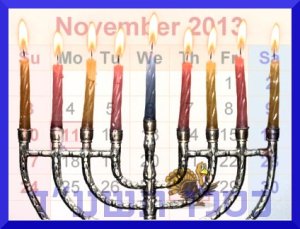 Try to keep up with me on this.
Try to keep up with me on this.
I know that’s an ominous way to start, but it’s worth it.
This month, Hanukkah and Thanksgiving will overlap for a joint celebration that will never happen again. Here’s why.
Thanksgiving is the 4th Thursday in November. Hanukkah is the 25th day of the Jewish month of Kislev.
The 4th Thursday in November can range from the 22nd to the 28th. If the 29th is a Thursday, then so is the 1st, so the 29th would be the fifth Thursday, not the fourth. And if the 21st is a Thursday, then it’s only the third Thursday. On average, then, Thanksgiving falls on the 28th about every seven years. It will fall on the 28th this year, then again in 2019, 2024, 2030, and 2041, or four times in the next 28 years. (It’s not exactly every seven years because leap days throw things off a little.)
The Jewish month of Kislev can currently start as early as November 3 or as late as December 2, which means that the first day of Hanukkah can come as early as November 28 or as late as December 27.
The reason for the broad range of possible dates is that the Jewish calendar is lunar-solar. The months are based on the cycles of the moon. But the calendar changes the lengths of those months, and even how many months are in a year, to make sure that Passover always falls in the spring. This complex system — put in place by Rav Shmuel in the first half of the first millennium CE — ensures that the Jewish date and the secular date match up every 19 years. (By contrast, the Muslim calendar is purely lunar, which is why Ramadan can fall during any time of the solar year. The Christian religious calendar is almost entirely solar, but Easter falls on the first Sunday after the first full moon after the spring equinox [around March 21], a calculation that involves the moon as well as the sun.)
Because of this Jewish 19-year cycle, 19 years from now, in the year 2032, Hanukkah will again fall on November 28. But Thanksgiving in that year falls three days earlier, on the 25th.
On average, we would expect the 19-year Jewish cycle and the 7-year Thanksgiving-on-November-28 cycle to coincide about every 19×7 years, which is to say, approximately every 133 years. And they sort of do.
One-hundred and fifty-two years ago, in 1861, the first day of Hanukkah and the 4th Thursday in November were both on November 28th. But there was no Thanksgiving back then.
In 152 years from now, in 2165, Thanksgiving falls on the 28th, and you’d expect Hanukkah also to fall on the 28th, but it doesn’t.
If you you’ve been paying attention (and if you haven’t given up yet), you may have noticed that I said “currently” when I explained when Kislev can begin. Remember Shmuel, who fixed the details of our current Jewish calendar in the first place? He, like everyone else back then, though that the year was 365.25 days long. This is why we have a usual year of 365 days, but every 4th year we add a leap day in February to make 366.
But Shmuel — again, like everyone else — was off by a little more than 11 minutes. The year is not quite 365.25 days long, but, rather, closer to only 365.2425 days, or about 11 minutes shorter than 365.25 days. For a long time no one noticed those 11 minutes. For a longer time no one cared. But by the time of Pope Gregory XIII in 1582, those 11 minutes per year — or about 3 days per 400 years — had added up to about ten days.
This meant that March 21, which had once been the approximate date of the spring equinox, was now 10 days later than the spring equinox. Or, conversely, the spring equinox fell on March 11. This was a problem for the Church, because the springtime holiday of Easter was shifting further and further away from spring.
Pope Gregory fixed the problem in two ways. First, he lopped off 10 days from the calendar. For Catholics, the day after Thursday, October 4, 1582 was Friday, October 15, 1582. Secondly, he eliminated 3 leap days every four hundred years. He decreed that years divisible by 4 would still be leap years, unless they were also divisible by 100 but not by 400. So 1600 would be a leap year (divisible by 100 and by 400), but 1700 would not (divisible by 100 and not by 400). This became known as the Gregorian calendar, and it gradually spread through the Christian world.
In 1752, the British empire adopted the Gregorian calendar, making the day after Wednesday, September 2, 1752 not the 3rd but rather the 14th. (An 11th day was necessary because 1700 was not a leap year in the Gregorian calendar.)
The Jews, of course, didn’t give a damn what Pope Gregory said. They kept using the Shmuelian calendar for their calculations. The Shmuelian calendar and the Gregorian calendar have been diverging at the rate of about 11 minutes a year, or 3 days every 400 years. Furthermore, the year 2100 will be a leap year in the Shmuelian calendar (because it’s divisible by 4) but not in the Gregorian calendar (because it’s divisible by 100 but not 400). So not long after the year 2100, the Jewish calendar and the secular calendar will diverge by an additional 1 day — though the details are even a little more nuanced, because Shmuel used a simplification of the final Jewish calendar.
This is why (remember the question from several paragraphs ago?) in the year 2165, when we’d expect Thanksgiving and Hanukkah to coincide again, Hanukkah will actually be one day later.
And that is why Thanksgiving and Hanukkah will never again coincide.
Well, almost never. If the Jews don’t ever abandon the calculations based on the Shmuelian calendar, Hanukkah will keep getting later and later — moving through winter, then into spring, summer, and finally back into fall — so that tens of thousands of years from now they will again coincide. But long before then the springtime holiday of Passover will have moved deep into summer, so be on the lookout for a memo with a calendar update in the next several thousand years.
And in the meantime, don’t miss this opportunity to enjoy an exceedingly rare confluence of celebrations.
Happy Hanukkah. And Happy Thanksgiving.
How the Secular Date of Dec. 5 Made Its Way into the Jewish Calendar
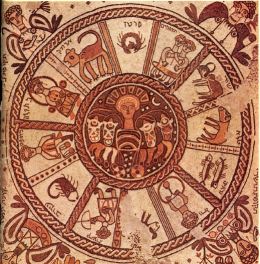 December 5 may be the most arcane date of importance in the Jewish calendar. It’s when we start saying the winter prayer for rain.
December 5 may be the most arcane date of importance in the Jewish calendar. It’s when we start saying the winter prayer for rain.
Right off the bat, a question presents itself: Why do we use a secular date to delineate this Jewish custom, when all of the others are based on the Jewish calendar? And secondly, what’s the magic behind December 5? The answers take us on a fascinating journey through Jewish text, nature, astronomy, history, infrastructure, and politics.
There are in fact two times we add a mention of rain to our service. The first, more familiar now, is the short insertion in the Amida prayer about God’s power: mashiv ha-ru’ach umorid ha-gashem. God makes the wind blow and the rain fall. The second is an addition to the prayer petitioning God for bountiful produce: ten tal umatar livracha. Grant us the blessing of dew and rain.
The 1800-year-old Mishnah — the initial compilation of Jewish law and practice — discusses both of these in the chapter called Ta’anit (“fasting”), starting with the first one.
There was general agreement that the insertion should commence during the rainy season, roughly Sukkot. The Mishnah records a disagreement about the details. Rabbi Eliezer considered the first day of Sukkot a good time to start praying for rain, but Rabbi Yehoshua countered that no one wants rain on Sukkot, so it would be better to wait until the end of the holiday.
But Sukkot is a pilgrimage holiday, when it was common to ascend to Jerusalem by foot. If we start praying for rain right after Sukkot, it might rain on those who are walking home.
So regarding the second insertion, Rabbi Gamaliel says that we should wait until 15 days after Sukkot to start praying for rain, that half-month being a reasonable amount of time to walk back to the farthest extent of the Land of Israel.
The Talmud — the great codification of Jewish law and practice that contains the Mishnah and meandering commentary on it — expands on the Mishnah and explains that in Babylonia they didn’t start saying the prayer for rain until 60 days into the rainy season of fall.
Jewish geography is exceedingly simple. There are essentially only three places: Jerusalem, the rest of Israel, and the rest of the world. Therefore, we in New York live in the same place (“the rest of the world”) as the Babylonians, so we follow their custom. We start saying the prayer for rain 60 days after the equinox.
The equinox is either September 22 or September 23.
But the careful reader may notice that 60 days after September 22 or 23 is November 21 or 22, not December 5. So we keep digging.
Shmuel, in the Talmud section known as Eruvin, calculates the four seasons as each lasting 91 days and 7.5 hours, and assigns September 23 as the start of fall. Because his became the official Jewish secular calendar, the Jewish equinox is always September 23. But we still wonder why we don’t start praying for rain on November 22.
Shmuel’s year of four seasons lasted 364 days and 30 hours, or 365.25 days. The solar year, though, is actually 11 minutes and 14 seconds shorter. Because of this discrepancy, the Jewish equinox has slowly moved forward compared to the solar equinox, at the rate of approximately one day every 128 years.
The Catholic Church (by coincidence) also used Shmuel’s calendar, but unlike in Judaism, most of the Christian holidays are based on the solar date. By 1582, the official and solar calendars were 10 days out of sync, one result of which was that the springtime holiday of Easter was marching forward into summer.
So Pope Gregory fixed the calendar by doing two things. He dropped 10 days in October (the day after October 4 was October 15 that year), and, moving forward, he dropped 3 leap years every 400 years: years that are divisible by 100 would no longer be leap years unless they were also divisible by 400. (That’s why 2000 was a leap year even though 1900 wasn’t, and 2100 won’t be.)
In America and elsewhere in the world we use the Gregorian calendar.
The Jews, though, didn’t give a damn about Pope Gregory. So in 1582, the Jewish equinox moved ahead 10 days to October 3, the Gregorian equivalent of the Shmuelian September 23. Since then, 1700, 1800, and 1900 have been Shmuelian leap years but not Gregorian leap years. So now the Shmuelian equinox is the Gregorian October 6.
Sixty days after October 6 is December 5. And there you have it.
But don’t get too used to that date. In the year 2100 (a Shmuelian leap year) the day moves ahead to December 6.
[Reprinted from the Vassar Temple December 2012 bulletin.]
Sanctity Doesn’t Have to be Solemn
This is our “holiday season”: Rosh Hashanah (at least one day, two for many), then Yom Kippur (never more than one day), Sukkot (about a week), and finally Simchat Torah and Shmini Atzeret.
It’s these last two that cause confusion.Simchat Torah, literally, “The Joy of Torah,” is either the 8th day of the seven-day holiday of Sukkot (if you keep only one day of Rosh Hashanah) or the 9th day of the eight-day holiday of Sukkot (if you keep two).
Shmini Atzeret, literally, “the eighth, a convocation,” is always the 8th day of Sukkot, whether or not Sukkot has eight days or only seven. (It also gives us the chance to use the word “convocation,” which doesn’t otherwise pop up too frequently.)
 Generally the first and last days of a holiday are “yontiv,” days on which, more or less like Shabbat, we rest from work. So the first and last days of the seven-day holiday of Passover are both yontiv, or, if you keep eight days, the first two days and the last two days. Similarly, the first day of the seven-day holiday of Sukkot — or the first two days of the eight-day holiday of Sukkot — are yontiv, along with the last day or so.
Generally the first and last days of a holiday are “yontiv,” days on which, more or less like Shabbat, we rest from work. So the first and last days of the seven-day holiday of Passover are both yontiv, or, if you keep eight days, the first two days and the last two days. Similarly, the first day of the seven-day holiday of Sukkot — or the first two days of the eight-day holiday of Sukkot — are yontiv, along with the last day or so.
This background is important for understanding a discussion in the Talmud, that ancient compendium of Jewish law that examines and directs Jewish practice. For example it’s the Talmud that tells us when and how to light Hanukkah candles (put them in the menorah from right to left, light them left to right), how often to pray (thrice daily, unless you don’t feel like it), when one bird is similar enough to a kosher bird that it, too, counts as kosher (if they naturally interbreed or if their eggs are indistinguishable), which activities detract from rest on Shabbat and yontiv (travel, for instance), and, of course much more.
So it should come as no surprise that the Talmud gives us regulations regarding the Sukkah: It must have four, three, or two and half walls; must offer a view of the stars; must have more shade than sun; must be at least ten hand-breadths high, but less than about 10 yards; and so on.
Then the question arises (on page 23a of the section called “Sukkot,” if you want to follow along at home) of whether a Sukkah can be built on top of a camel. And the answer is, no, because the Sukkah is meant for the entire seven- or eight-day period of Sukkot, but sitting on a camel counts as travel, which, as we just saw, detracts from yontiv. So a Sukkah on a camel would be useless for at least two of the seven days of Sukkot (or four of the eight).
The next question is whether an elephant can be used for one of the walls of the Sukkah. And, again, the answer is no, because it might run away, invalidating the Sukkah. What about a dead elephant? Sure! As long as the elephant is as least ten hand-breadths in height, we’re good to go. Smaller animals, of course, might be ten hand-breadths in height only when standing but not when lying down. These, according to the Talmud, should therefore be suspended by ropes from above. (Please don’t try this at home.)
Now, Rabbis Meir, Yehudah, and Zeira, along with the other participants of this Talmudic debate, knew full well that hanging an animal just so it couldn’t lie down was a violation of the prohibition against cruelty to animals, and other obvious considerations prevent beasts of burden from doing double duty as structural supports.
So what are we to make of all of this? To me, the most important lesson is to try to enjoy whatever we do. We don’t have to be somber to take something seriously, and sanctity doesn’t have to be solemn. Torah is joyous.
And we have a holiday just to remind us. Happy Simchat Torah.
The Subtext of Our Lives: Unetaneh Tokef and the High Holidays
“Who shall die by fire, and who by water?”
For many people, that question — part of the haunting Unetaneh Tokef prayer — is reason enough to boycott the Days of Awe. After all, the text of that famous medieval poem offers a simple, clear answer to why people suffer: it’s their own fault. They were given a perfectly fair trial (conveniently featuring God as prosecutor, defense attorney, witness, and judge), and every last chance to return to the right path, but they stubbornly refused God’s lifeline. So they died.
But the subtext of Unetaneh Tokef tells a different story, referencing the Book of Job more than any other. For example, the “still small voice” of the Unetaneh Tokef text mirrors Job 4:16. The text of the next line of Unetaneh Tokef deals with angels, as does Job 4:18. Literally reading between the lines, we find Job 4:17: “Can humans be acquitted by God?”
The text and subtext vehemently disagree, so what looks like an answer — people die because God makes them — is really a question: What’s going on here?
The High Holidays in general are like that, and so too are our lives. We have a text. But we need the subtext to understand it. And the simple, clear answers are usually wrong.
[Adapted from my essay “How was Your Flight” in Who by Fire, Who by Water: Un’taneh Tokef, pub. 2010 by Jewish Lights Publishing, ed. Rabbi Larry Hoffman.]
What does the “pur” in Purim really mean?
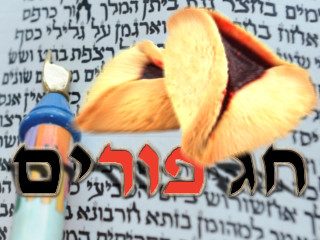 Soon we will bake hamentaschen, dress up in costume, and read the Book of Esther (“The Megillah”) to celebrate the joyous holiday of Purim. According to verse 9:26 of that very book, we get the name “Purim” from the pur that was cast: “Therefore, they called these days `Purim’ after `pur.'” But while purim is the Hebrew plural of pur, pur itself is not a Hebrew word. For this reason, twice before in Esther, when pur is mentioned, we are told, “…pur, that is, the goral.” So a pur is a goral, but what is a goral?
Soon we will bake hamentaschen, dress up in costume, and read the Book of Esther (“The Megillah”) to celebrate the joyous holiday of Purim. According to verse 9:26 of that very book, we get the name “Purim” from the pur that was cast: “Therefore, they called these days `Purim’ after `pur.'” But while purim is the Hebrew plural of pur, pur itself is not a Hebrew word. For this reason, twice before in Esther, when pur is mentioned, we are told, “…pur, that is, the goral.” So a pur is a goral, but what is a goral?
In all likelihood, goral originally referred to a bunch of small pebbles or similar objects used to make decisions by chance: they would be cast down on the ground or put in a vessel of some sort, from which one would be drawn at random. (A similar practice, in which stones were placed in a helmet, is clearly documented from Homeric Greece. The Greek verb for casting these objects was ballo, from which we get our English word “ballot.”)
For example, in Leviticus 16, Aaron takes “two goats,” “a goral for God” and a “goral for Azazel.” Then the goat that God’s goral lands on is God’s goat, and the goat that Azazel’s goral lands on is Azazel’s goat; this latter goat is sent “to Azazel” in atonement. (Based on an ancient misunderstanding of the Hebrew “to Azazel,” a 1530 translation reads “to scape” instead of “to Azazel,” giving us the English phrase “scapegoat.”)
Read more…
We’re All Charlie Brown During the Holidays
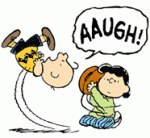 Who can forget the repeated scenes of Charlie Brown falling flat on his back yet again after trying to kick a football that Lucy has impishly yanked away? No matter how many times he’s failed, good old Charlie always believes that this time will be different. Lucy has changed. And he’ll finally succeed.
Who can forget the repeated scenes of Charlie Brown falling flat on his back yet again after trying to kick a football that Lucy has impishly yanked away? No matter how many times he’s failed, good old Charlie always believes that this time will be different. Lucy has changed. And he’ll finally succeed.
It’s funny because we all know that Charlie Brown will miss the ball.
But really, I think, it’s funny because we see ourselves in the character of Charlie Brown.
Each year at the holidays, we are accosted by images of happy children reveling in their newly received gifts.

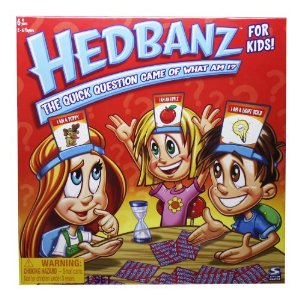 The most wished for toy on Amazon.com — I’ve managed to live a pretty happy life never having even heard of it until today — comes in a cartoonish package depicting three deliriously happy children smiling the way only cartoon characters can. And the top selling toy on that website similarly depicts a mother smiling with her two amazingly happy pre-teen and teenage children.
The most wished for toy on Amazon.com — I’ve managed to live a pretty happy life never having even heard of it until today — comes in a cartoonish package depicting three deliriously happy children smiling the way only cartoon characters can. And the top selling toy on that website similarly depicts a mother smiling with her two amazingly happy pre-teen and teenage children.
“Shop by age to find the perfect toy,” Amazon.com advertises, following up with five pictures of smiling children.
What a concept: “The prefect toy.” Good grief!
It’s as though the only thing standing between children and unlimited bliss is the right gift. Find the right toy, and even teenagers will be gleeful. Siblings will stop fighting and start getting along. You’ll get home from work in time to enjoy the evening with your children, who suddenly will have no homework. Even your house will magically become spotlessly clean. All if you find the right gift.
Children and adults alike buy into the myth, with real dollars.
But it doesn’t work. Like Charlie Brown, we find our goal of a Gift To End All Sadness snatched away at the last minute.
And, worse, we come to a reasonable but wrong conclusion when it doesn’t work: we think that we have simply bought the wrong gift. So we set out — again like Charlie Brown — with the firm but wrong expectation that next time will be different. The next gift will make our lives better, and fix what’s wrong in the lives of those we love.
I have nothing against gifts. I like giving them and I like getting them. I will keep buying things for the important people in my life, and nothing I write here should dissuade you, dear friends, from buying things for me.
So, yes, I like presents.
Even more, I like the messages of the holidays.
And lest I once again fall flat on my back, I try not to confuse one with the other.

